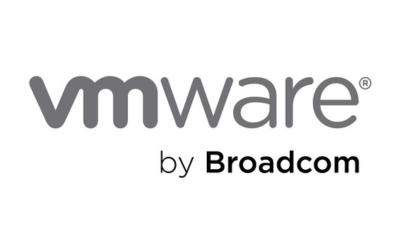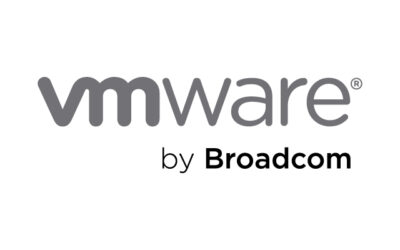Hyperscale cloud is designed for enhanced scalability based on demand and it means companies can utilise servers that are owned and managed by cloud providers. If a company needs a lot of extra resources at short notice this can be spun up for them as cloud providers already have this hardware to hand. Start-ups gain a lot from using these services since there is no need to go out and buy your own hardware, making the cost of entry low. But hyperscale cloud isn’t a long-term solution, and companies that have grown need to investigate if there’s a better IT solution out there.
How growing your company affects the value of your hyperscale cloud
Once a company becomes established, growth often slows, and future efficiency becomes an increasingly key determinant of value. Wang S and Casado M state that if a company is operating at scale the cost of cloud can be at least double what their infrastructure bill would be. On top of this, Lunavian A states that this is made all the worse if enterprise companies have created an inefficient system by lifting and shifting all their applications onto the cloud with little or no regard for refactoring or rearchitecting for the cloud.
What is cloud repatriation?
Due to this cost factor, cloud repatriation is on the rise. Cloud repatriation is not something a company plans for, it is usually a response, says Anders Elback, the Associate Director at IDC Nordic.
Cloud repatriation is the movement of part or all of a business’ IT off the cloud back to an on-premise system or colocation in a data centre.
Historically, most businesses have chosen a hybrid or private cloud solution as an alternative to public cloud, however it is becoming more popular to repatriate back to your own managed hardware due to cost, performance, and security considerations.
An IDC survey looked into the trends of repatriation from public clouds and found that:
- 80% of respondents have repatriated workloads from public cloud environments within the past year
- Over 70% of customers used multi-cloud deployments
- Repatriation rates increased when the costs of public cloud solutions were perceived to be higher than other computing costs
- Organizations that have been operating for less than 25 years were more likely to repatriate public cloud workloads than older organizations.
When should a company repatriate from the cloud?
Arguably the most successful example of repatriation is how Dropbox saved $75m in cumulative savings thanks to their infrastructure optimization project, mostly repatriating their workloads from public cloud in 2017. An estimated $100B of market value is being lost across 50 of the top public software companies due to the clouds impact on margins.
So, when discussing repatriation, the question is which is better, on-premise/colocation or public cloud? Public cloud provides greater scalability with less responsibility. On-premise/colocation differs from cloud environments as you own the hardware and manage the technology. This gives your company more ownership over security and customisability which may be required in some industries, such as the health and financial sectors.
The reasons why a company would migrate back from the cloud to on-premise or colocation could be due to a number of reasons:
- Cost – Public cloud is cheap for sudden, infrequent surges in computer needs but it is not cost effective for large-scale year-round deployments.
- Control over data and security – In public cloud environments hardware can be shared by multiple companies and therefore misconfigured buckets are a common cause of security issues. On-premise/colocation solutions have consolidated management, so the hardware is not shared and offers greater control over your data.
- Performance – The performance of public cloud can be highly variable and depends on the available WAN bandwidth of the cloud provider’s overall workload at that time. Whereas on-premise or colocation will have allocated the correct amount for you.
- Vendor lock in – Business’ can become overly dependent on the cloud provider which may make it difficult to switch provider later on.
How to repatriate off the cloud
Cloud repatriation is complex and is not just about readopting the same infrastructure configurations that companies were using prior to public cloud adoption. It’s more about taking advantage of new hybrid IT opportunities and deciding what is most efficient and suitable for the workloads in a company’s infrastructure. Anders Elback, the Associate Director at IDC Nordic, quite rightly says that this could even be public cloud to public cloud due to going from software as a service to infrastructure as a service. Tozzi C says that the following are useful examples of ways a cloud workload can be repatriated:
- A SaaS application that was previously hosted in a traditional public cloud is migrated to an edge computing model, in which the application itself remains in the public cloud but data processing takes place in on-premise servers to improve performance. In this case, only one facet of the workload is repatriated.
- A backup and recovery operation whose backup data storage once relied solely on the public cloud is expanded so that backups are retained both in the cloud and on-premise, to give the organization more options for recovery. In this example, cloud repatriation doesn’t even technically take place, although a workload that once ran only in the public cloud now also consumes on-premise resources.
- To meet compliance needs, a company takes advantage of a next-generation hybrid IT framework to move a workload that previously ran in the public cloud to private servers. The workload continues to rely on public cloud services, but the hosting is in a colocation data centre, increasing security.
The key to a successful IT system is taking on a workload-first approach to help inform you when cloud repatriation is an option. There will be workloads where the public cloud is still optimal and so this is where a hybrid IT model shows its strength. Companies can repatriate where necessary and then connect on-premise/colocation environments to the cloud. IT managers and CTOs are always under-pressure on where to invest and build for the future as weel as driving down costs.
An Infrastructure as a Service specialist can analyse your entire IT estate and choose the location of where each workload works best. We won’t try to take the whole IT infrastructure into Redcentric’s ecosystem if it doesn’t make sense. Get in touch to talk to one of our experts about how repatriating some of your systems could be the future of your digital transformation.



